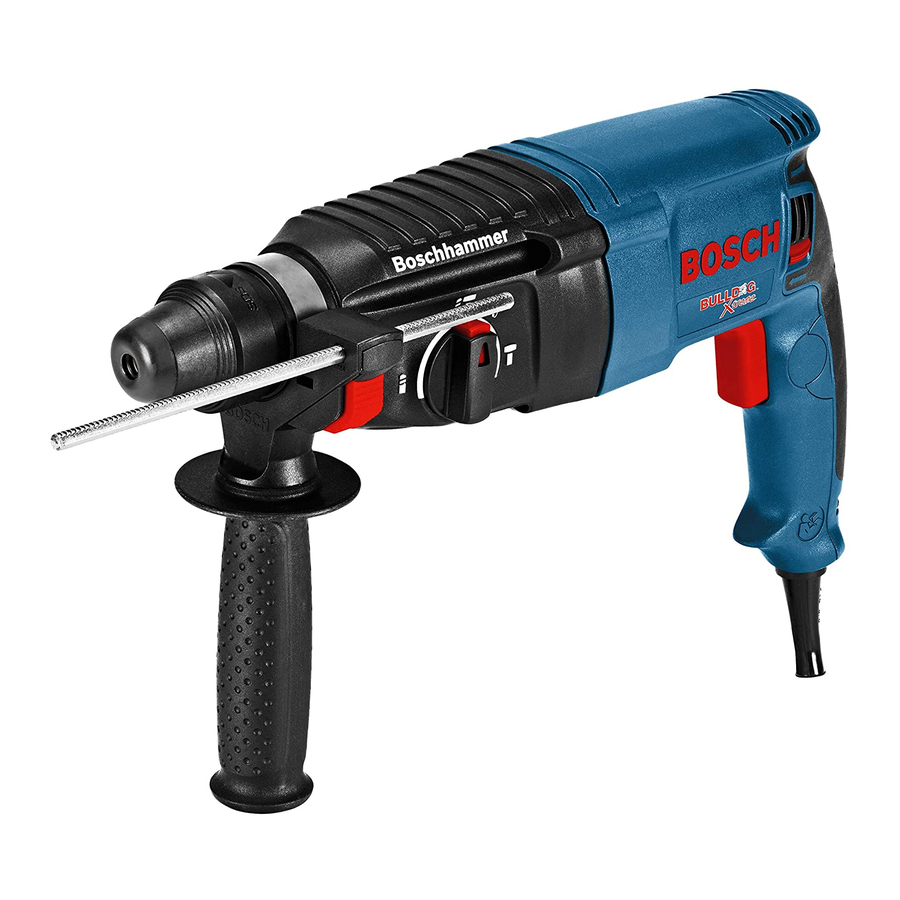Bosch 11250VSRD 사용 설명서 - 페이지 11
{카테고리_이름} Bosch 11250VSRD에 대한 사용 설명서을 온라인으로 검색하거나 PDF를 다운로드하세요. Bosch 11250VSRD 44 페이지. Operating instructions
Bosch 11250VSRD에 대해서도 마찬가지입니다: 작동/안전 지침 매뉴얼 (45 페이지), 작동/안전 지침 매뉴얼 (49 페이지)

(optional
accessory)
must be used for dust
extraction,
not the standard
dust
canister
(Fig. 12). If required,
remove the dust cap for
small drill bits.
To insert the dust cap for core bits, push it from
above into the dust extraction
system until you
hear it click into place (Fig. 12).
To remove of the dust cap for core bits, push
the release latch outward and pull off the dust
cap.
DUST CAPFORCORE BiTS
1-1/2"MAXIMUM CAPACITY
(optional a ccessory)
RELEASE
LATCH
VACUUM ADAPTER--
DUST CANISTER
(optional accessory)
Operating
Instructions
VARIABLE
SPEED CONTROLLED
TRIGGER
SWITCH
Your tool is equipped
with a variable
speed
trigger
switch.
The
tool
speed
can
be
controlled
from the minimum
to the maximum
nameplate
RPM by the pressure
you apply to
the trigger.
Apply more pressure
to increase
the speed and release
pressure
to decrease
speed.
This accurate
speed
control
enables
you to drill without
center
punching.
It also
permits
you to use as a power screwdriver.
Bits are available
for driving
screws
as well
as running bolts and nuts (Fig. 1).
REVERSING
SWITCH
LEVER
This tool is equipped
with a rotating
brush
reversing system. This results in longer tool life
while maximizing
power in both forward and re-
REVERSING
verse directions.
The reverse
switch
can be
SWITCH
operated
from either the right or left side of the
LEVER
tool.
FOR FORWARD
ROTATION:
slide switch
to
arrow marked forward (Fig. 13).
FOR REVERSE
ROTATION:
slide
the slide
switch to arrow
marked
reverse.
NOTE: Tool
will not operate in middle position.
SLiP CLUTCH
The tool has an internal
preset
clutch.
The
clutch
is set such
that
sufficient
force
is
transmitted
to the
bit
for
most
drilling
conditions
but it will slip when bit binds in the
hole or the tool is overloaded.
Be aware
that
due to required
clutch
setting,
you
may
experience
a torque
reaction
an instant
before
the clutch
slips.
This torque
reaction
will twist the body of the rotary hammer in the
opposite
direction
as the bit rotates,
i.e.,
counterclockwise.
As clutch
is slipping,
the
bit will most
likely
stop rotating.
When
the
binding
force on the bit is removed
the clutch
automatically
resets.
If you experience
bit
binding
and clutch begins to slip, immediately
turn the tool "OFF" and correct
the condition
leading
to the bit binding.
-11-
